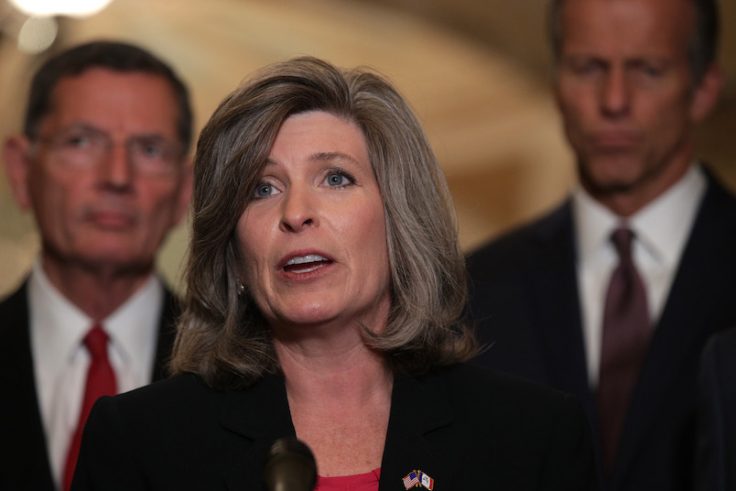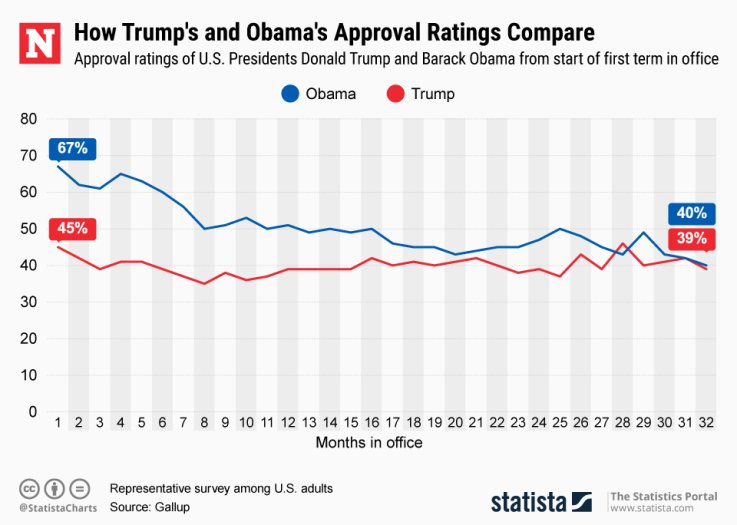Making Sense of
Israel’s Post-Election Political Chaos

The vote count in this week’s Israeli national elections is now 99 percent complete, allowing for a sense of which party obtained what number of seats. Unfortunately for Prime Minister Benjamin Netanyahu, the results will make it extremely difficult for him to form a coalition, putting his long-running tenure in jeopardy. As of this writing, Netanyahu is planning to skip the U.N. General Assembly meeting next week to focus instead on building a government.
Does he have a chance? Let’s take a look at the math. The Knesset, Israel’s parliament, has 120 seats to be divided up among the various political parties. No single party has ever obtained a majority of 61 or more seats, so every Israeli government has been a coalition of parties. After elections, parties must recommend their preferred prime minister to Israel’s president (currently Reuven Rivlin). The president is then responsible for deciding which party to task with forming a coalition. Once he makes his choice, the head of that party is given six weeks to draft an agreement with other parties to form a government.
This time around, it is unclear which party will be able to make a coalition, as almost every possible combination of like-minded parties cannot reach a 61-seat majority. To see why, let’s break down the results by party.
* * *
Blue and White: 33 seats
Blue and White is an amalgamation of three factions. It’s led by Benny Gantz, a former Israeli Defense Forces (IDF) chief of staff, and boasts two other former chiefs of staff as well as TV host Yair Lapid, who originally entered politics on a platform fueled by secular voters’ resentment of the ultra-Orthodox, in its ranks.
The political positions of Blue and White are rather vague, falling somewhere in the center. In appealing to voters, the party has drawn on its leaders’ security credentials to project strength, while portraying itself as tough on Israel’s enemies in the same way as the Likud. Secular Israelis who take umbrage at ultra-Orthodox citizens’ control of Israel’s religious institutions and their unwillingness to serve in the IDF were drawn to support Lapid.
No less important, however, is what Blue and White is not: Netanyahu. In both campaigns, its leaders consciously presented themselves as free of the corruption, hedonism, and hunger for power that many Israelis see in the long-time prime minister.
Likud: 31 seats
The Likud party has been led by Netanyahu for almost a decade and a half. In that time, it’s seen its support grow steadily to its current 31 seats. After the Second Intifada, in which hundreds of Israelis were killed by Palestinian suicide bombers, voters turned to the right. Right-wing politicians, they felt, were the best bet to keep the country safe. Likud, which runs on a free-market, traditionalist platform and paints itself as resolute on security issues, has been the main beneficiary of this trend.
Netanyahu rose with the Likud to become Israel’s longest-serving prime minister. He claims responsibility for guarding Israel’s stability through the Arab Spring, the subsequent collapse of many Arab states, and the civil war in Syria. He sees himself as a Churchill-like figure fighting the rise of a nuclear-armed Iran. But he has been dogged by corruption allegations throughout his tenure — he currently faces looming indictments on bribery and fraud charges — and his response has been to accuse the police and legal system both of participating in a “leftist conspiracy” to overthrow him.
Joint List: 13 seats
Four different Arab-Israeli political parties came together to form the Joint List, whose current head is Ayman Odeh. The coalition has managed to work together despite the wildly disparate ideologies of its constituent parties, which range the gamut from the far-left, Communist-rooted Hadash to the more conservative, Islamist Ra’am. No Arab-Israeli party has ever sat in a coalition government, and Odeh’s post-election statements to the press suggest that streak is unlikely to be broken this time around.
Yisrael Beytenu: Eight seats
This secular-nationalist party aims to be a voice for Israelis who emigrated from the former Soviet Union en masse in the early 1990s. It was founded in 1999 by Avigdor Lieberman — a Moldovan immigrant who once worked as a nightclub bouncer and began his political career as a protégé of Netanyahu — when Lieberman recoiled at Netanyahu’s handling of the peace process. Lieberman has brought the party into coalition with Netanyahu multiple times over the last decade, but broke from the PM in 2018 and has vowed not to join any coalition government that includes the ultra-Orthodox parties.
The Rest
Several more parties represent voters from all over the political map. Israel’s two ultra-Orthodox parties — Shas (nine seats) and United Torah Judaism (eight seats) — don’t fall easily along the left–right spectrum, but generally oppose the mandatory draft of yeshiva students, which causes friction with secular and moderately religious Israelis, friction given voice, most notably, by Lieberman and Lapid. The New Right and Jewish Home parties (seven seats combined) ran together as the Yamina bloc in the election but have since separated. It is thought that both will remain on Netanyahu’s side, though the comments of former Yamina leaders in the election’s immediate aftermath have cast doubt on that prospect.
Meanwhile, on the left, the once-mighty Labor party (six seats), whose members included many of Israel’s founding fathers, has withered in recent years as Netanyahu’s Likud has come to dominate the country’s politics. Its head is Amir Peretz, a longtime party member and former minister of defense, and it partnered with a much smaller party, Gesher, in this week’s election. Rounding out the results, the latest incarnation of the Meretz party, called the Democratic Union (five seats), is the farthest to the left out of all parties that won seats.
* * *
So that’s the breakdown. What does it mean for the upcoming negotiations? Netanyahu’s previous coalitions were all made up of right-wing and ultra-Orthodox parties. Assuming the former Yamina bloc is willing to join with Likud, Shas, and UTJ, Netanyahu can count on a total of 55 seats, six shy of a majority. Lieberman, who through Yisrael Beytenu controls eight seats, precipitated the election by refusing to sit in coalition with Likud and the ultra-Orthodox parties.
There are even fewer options with which to form a center-left government. Partnering with Labor-Gesher and the Democratic Union would give Gantz’s Blue and White just 44 seats. Yisrael Beytenu’s eight seats would get Gantz up to 52, assuming Liberman was willing to join with the left-wing parties. Gantz could conceivably try to bring the ultra-Orthodox parties into an agreement, but that seems exceedingly unlikely for a number of reasons. For one thing, Lieberman has refused to join in coalition with the ultra-Orthodox parties. For another, many ultra-Orthodox leaders have vowed not to sit with Gantz’s colleague Lapid, and Haredi parties sitting in a coalition with the leftist Labor-Gesher and Democratic Union would lead straightaway to conflicts over gay rights and the place of religion in the Israeli state. If somehow these many obstacles were overcome, Gantz would control only 61 seats — just enough to govern in a highly unstable coalition.
If the Arab party joined a left-wing coalition, that could be a game changer, but it’s highly unlikely. Many Arab Knesset members are unwilling to be formally part of an Israeli government, and many Jewish centrist politicians disdain the Arabs’ anti-Zionism.
One option to resolve the stalemate is a so-called unity government comprising Blue and White and Likud, with the parties’ leaders taking turns as prime minister. Such an arrangement has happened in Israeli politics once before, in the 1980s, with Likud and Labor sharing power. But it would have a high potential for instability, and Gantz has said that he won’t support any government headed by a Netanyahu-led Likud if Netanyahu is formally charged in the pending corruption cases against him. A pre-indictment hearing to determine if Netanyahu will be charged is scheduled for early October.
There of course remains the possibility of a revolt within the Likud against Netanyahu. During the election, both Lieberman and Lapid indicated that senior Likud politicians would consider ousting the prime minister and bringing the Likud into a unity government without him. But Likud members generally place a high value on loyalty to their leader, and several months ago Netanyahu pushed through a change to the party’s bylaws that makes it harder to expel him, perhaps sensing that some in the party were growing restless.
None of this bodes well for anyone who’d been hoping to see Netanyahu remain in power. But his political obituary has been written before, and he’s still standing, at least for the moment. It is entirely possible that the prime minister, a masterful political tactician, will try to find a different path. He may entice politicians in the center-left bloc to defect to his side, or offer the moon in hopes of changing Lieberman’s mind, or even try to scuttle the negotiations if he can’t win them and precipitate an unprecedented third election, which all involved have suggested they wish to avoid. Only time will tell.

















